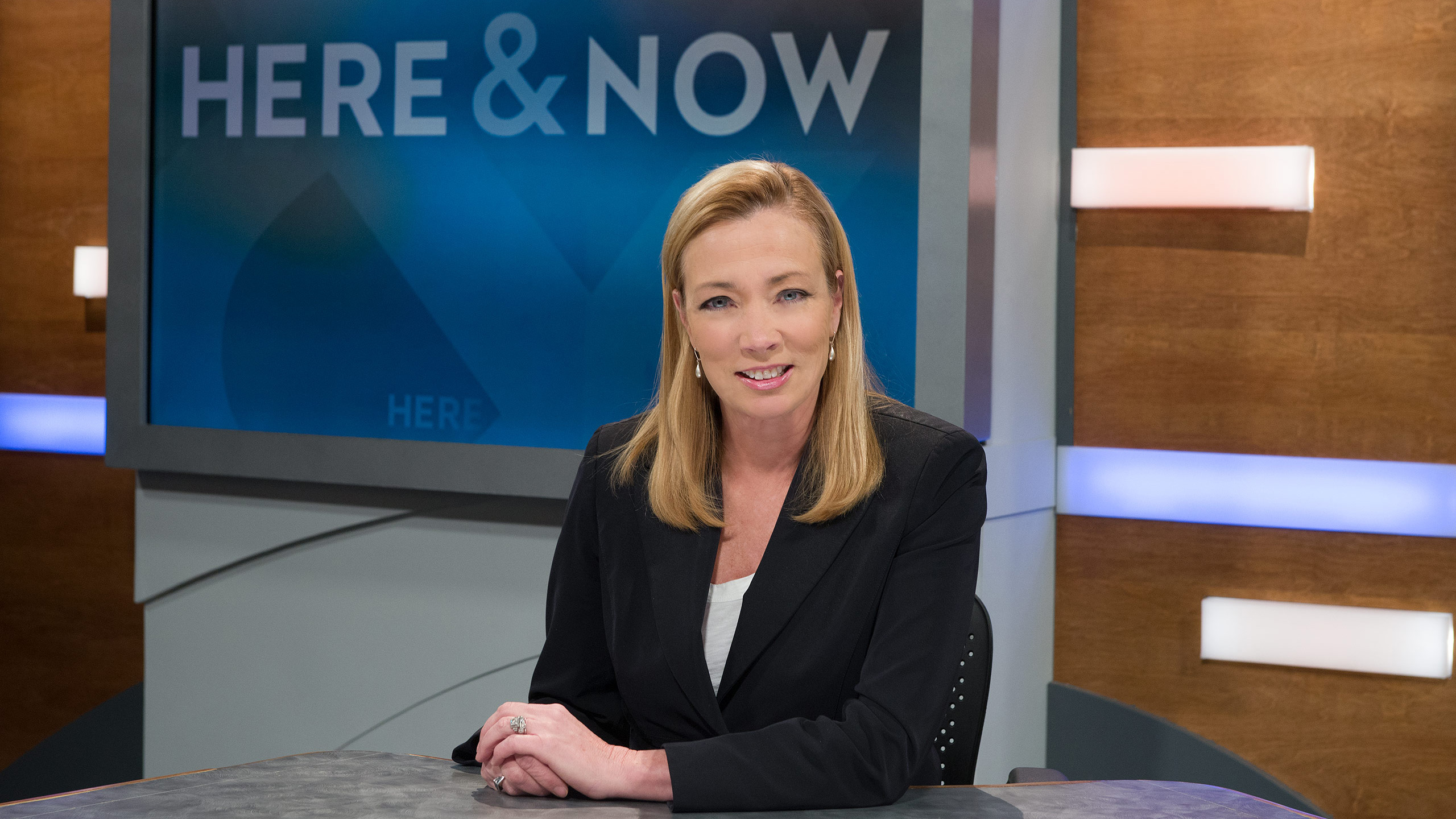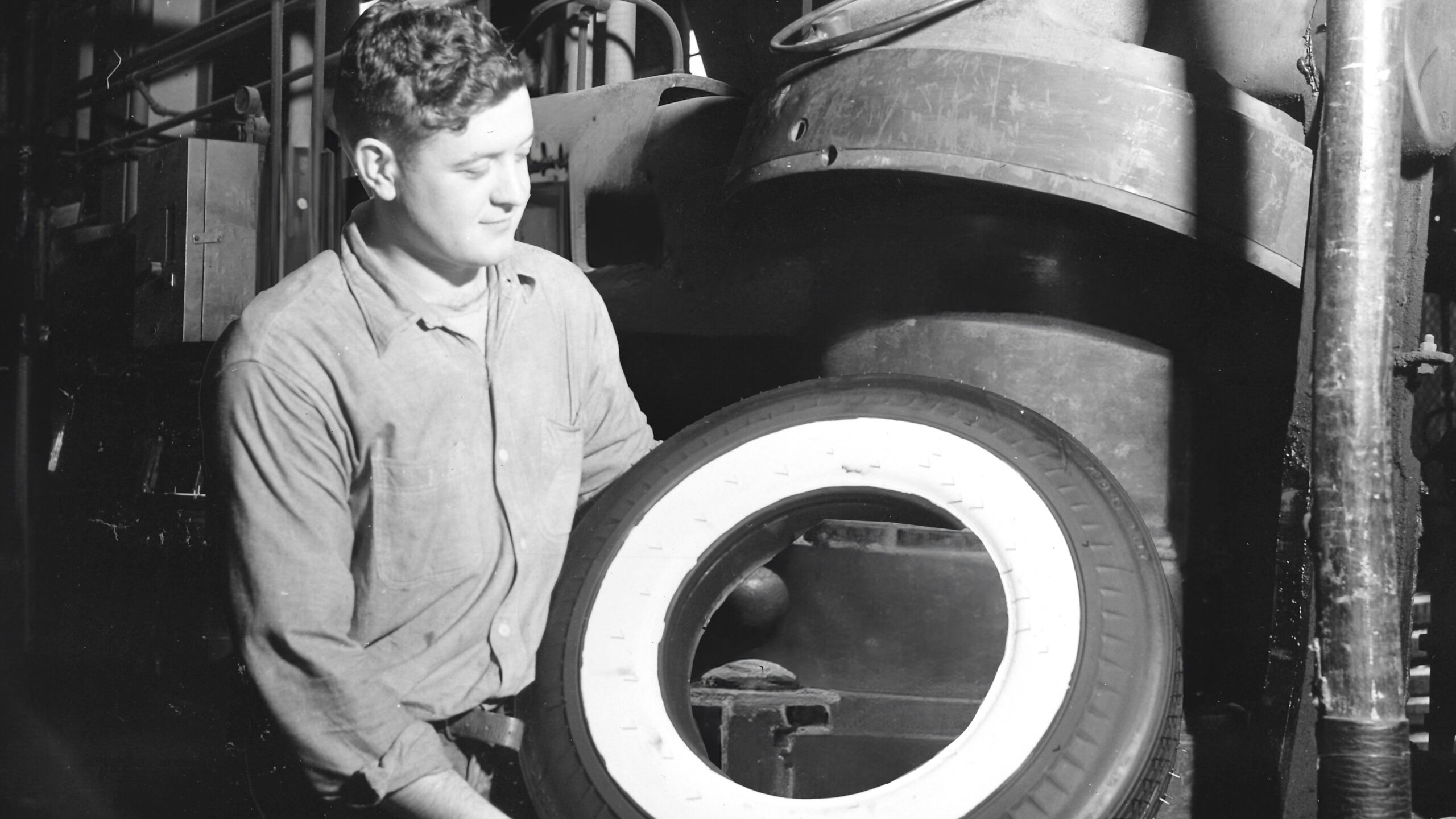Wisconsin Public Television
Transcript: In Wisconsin #821
Original Airdate: 8 April 2010
>> Patty Loew:
Welcome to “In Wisconsin,” I’m Patty Loew. This week, a mystery of nature and here is a clue.
>> Man:
That’s it right there. Dit, dit, dit.
>> Patty Loew:
Find out what links this Panamanian rainforest to a cemetery in La Crosse. Plus, adventure on the little-known North Country Trail.
>> Man:
It traverses through a wide diversity of environments and places.
>> Patty Loew:
Come hike deep into Wisconsin’s historic northwoods. This is a Hines emerald dragonfly and this researcher is trying to save it from extinction. Those reports next on “In Wisconsin.”
>> Announcer:
Major funding for “In Wisconsin” is provided by the people of Alliant Energy, who bring safe, reliable and environmentally friendly energy to keep homes, neighborhoods and life in Wisconsin running smoothly. Alliant Energy, we’re on for you. And the Animal Dentistry and Oral Surgery specialists of Milwaukee and Oshkosh, a veterinary team working with pet owners and family veterinarians throughout Wisconsin providing care for oral disease and dental problems of small companion animals. With additional funding provided by Bike Wisconsin.
>> Patty Loew:
The topic of urban sprawl and development is a perennial issue in our state. This week we take a closer look at a conservation sanctuary that has developed in La Crosse. It wasn’t planned. It is unexpected and it could provide a model for international conservation efforts. But the first stop is in Panama where “In Wisconsin’s” Jo Garrett shows you how the two are linked.
>> Jo Garrett:
Craig Thompson is a long way from home. He’s leading a bird watching trip in Panama, one of the best birding places in the world.
>> Craig Thompson:
It’s called a speckled mourner. Its what were hearing, it happens to be one of those species thats very rare. It’s a really good find, even though its not glamorous to look at, its still a really neat bird.
>> Jo Garrett:
Thompson is a regional land manager for the Wisconsin department of natural resources. On his own time, he leads bird watching trips around the world to birding hot spots like this one.
>> Craig Thompson:
You’ll see this brown, dry, drab bird.
>> Woman:
Okay. The brown bird.
>> Craig Thompson:
Another Brown Bird. ABB.
>> Jo Garrett:
Back home in La Crosse, Thompson is birding at another bountiful site.
>> Craig Thompson:
It is a little warbler called a Tennessee warbler. That’s it right there. Dit, dit, dit, dit. It has this accelerating staccato call. It spent the winter in Costa Rica and is headed to arboreal Canada to breed. This is a species we’ll only hear during migration.
>> Jo Garrett:
The sharper eyed among you may have noticed the headstones behind Thompson. That’s right, he’s birding in a cemetery and here is the story. Cemeteries have a role to play in international conservation efforts for migrating birds. This one is called Oak Grove. It is not way out in the suburbs, nope, it’s nearly downtown.
>> Craig Thompson:
We’re almost smack in the middle of the city of La Crosse. A town of 50,000, highly urbanized, it’s busy.
>> Jo Garrett:
Take a look at the city of La Crosse and it’s easy to see how places like cemeteries can provide a little pocket of green, a kind of avian pit stop, for the birds. Oak Grove joins up with the La Crosse Marsh on one end making for 80 acres in the heart of the city. It is inadvertent but terrific bird habitat. The soundtrack tells the story.
>> Craig Thompson:
I hear a ballgame going on behind us, some kind of baseball practice. I can hear car traffic and vehicles on Lange Drive and at the same time we’re hearing a yellow warbler off in the distance. Baltimore oriole, chipping sparrows and the works. It’s this mishmash of all kinds of nature and urban environment that come together.
>> Jo Garrett:
Nature in an urban environment. Can this mish-mash work?
>> Craig Thompson:
Here we are at ground zero, trucks, parades, people, ballgames, planes flying overhead and yet the birds are basically oblivious to all of that.
>> Jo Garrett:
Okay, they don’t mind the city, but what draws them here? Let’s go back to the overview of La Crosse. It’s a river town built on the banks of the Mississippi. Think interstate for migrating birds.
>> Craig Thompson:
It’s a monstrous river. The largest river in the United States and gets tremendous traffic both from people and wildlife, particularly migratory birds.
>> Jo Garrett:
Thompson and his wife Mary make it a point of traveling to places like Perrot State Park for another view of this mighty river during migration.
>> Craig Thompson:
It’s one of the world’s great migratory flyways. You get millions of birds that funnel up the Mississippi. Oh, wow, its a Swainsons thrush.
>> Craig Thompson:
You got him?
>> Mary Thompson:
Yeah.
>> Craig Thompson:
Wow.
>> Jo Garrett:
It’s been a very long journey for that Swainsons thrush.
>> Craig Thompson:
They’ll winter in Ecuador and Colombia and Venezuela and Peru.
>> >> Jo Garrett:
It’s traveled thousands of miles from wintering grounds on up the river and needs to refuel.
>> Craig Thompson:
Especially to the bird that’s just migrated up and they’re exhausted and really hungry and they drop down and have to find something to eat. If they drop in a bed of gravel with a couple of mums poking out that’s not a good habitat.
>> Jo Garrett:
The press is on. Many of these birds face enormous pressures.
>> Craig Thompson:
A long of our migratory songbirds are experiencing declines. 157 or so species are in a noted decline. Many are precipitous declines and there are actions we have to take immediately.
>> Jo Garrett:
They need habitat. Up and down the river corridor, through the whole journey, which brings us back to Oak Grove.
>> Craig Thompson:
This is an excellent model as to how cemeteries can be landscaped to provide terrific habitats for birds.
>> Jo Garrett:
This place wasn’t landscaped for birds. It was landscaped for aesthetics. What resulted is a pretty, peaceful place that is also happily an avian smorgasbord. Which is great, because different birds have different dining demands.
>> Craig Thompson:
This is perfect. There are young trees, old trees, shrubs near the ground level that the thrushes will hop around. So, you have birds scattered throughout that zone from ground layer up to canopy and they’re everyone and the birds love it. There is an oriole singing above us right now.
>> Jo Garrett:
These birds don’t do seeds. Bird feeders won’t cut it. They go for fruits in the fall and insects in the spring.
>> Craig Thompson:
High protein diet.
>> Jo Garrett:
Atkins.
>> Craig Thompson:
Without a doubt.
>> Jo Garrett:
Atkins in the raw, I love it.
>> Craig Thompson:
You never see chubby birds. In the spring primarily what they’re looking for are insects. That’s the go-to food. If you watch a warbler inspecting a tree, theyre trying to find a little gnat, bug, caterpillar and they have to eat them continuously throughout the day and they have to work hard to find the food. If the trees and shrubs are here, they’ll be more successful.
Jo Garrett:
Bird-friendly habitats are in decline and they face a tougher future.
>> Craig Thompson:
There are going to be a lot more people, 200,000 a day, I believe, we’re adding to the planet. So, a week from now there will be more than a million new mouths to feed with increasing pressure on the planet. There just aren’t a lot of big areas left to protect. We have to figure out how to make the small stuff work.
>> Jo Garrett:
Cities can be full of small stuff that can work. You’re looking at another one.
>> Craig Thompson:
A program was advanced by the Audubon Society a few years ago to try to get golf courses to become more wildlife friendly as habitats continue to shrink worldwide. These kinds of places are going to provide safe refuge for birds ultimately if they’re done right. So, to have this series of habitats that are linked in some way along their entire migratory pathway is vital for the conservation of all species that migrate back and forth.
>> Jo Garrett:
Back and forth. Through the whole journey these tiny travelers need shelter and sustenance.
>> Craig Thompson:
These huge movements of animals back and forth, in concert with the rhythms of the earth. We have to be on board and be stewards. It’s our responsibility and it’s up to us to start right now.
>> Patty Loew:
Craig Thompson discovered that not only cemeteries, but your own backyard can be an oasis for migrating birds. Next week we’ll explore his backyard to show you how Thompson turned it into a smorgasbord for songbirds. Thats Thursday at 7:00 here “In Wisconsin.” The next annual US interior department State of the Birds report warns that climate change could have an adverse impact on Wisconsin. The national report says changing temperatures and precipitation could further harm migratory birds like the whooping crane. Also mentioned by name in the bird report are the common nighthawk and northern pintail duck which spend part of their year in Wisconsin. On the North Country national scenic trail, birders can spot a variety of feathered friends and experience unique landscapes. It’s part of the National Park System and is a work in progress as volunteers help to stretch the trail across northern Wisconsin. Milwaukee Public Televisions Dan Small brings you the historic tale of this trail from Douglas County.
>> Dan Small:
When completed, the North Country Trail will span 4,600 miles from the Adirondack Mountains of New York to the Missouri River in North Dakota. The greatest percentage of completed trail lies in Wisconsin. Here, too, you’ll find the oldest segment. A path used by Wisconsin’s earliest inhabitants dating back 10,000 years or more.
>> Tom Gilbert:
We have more miles on the ground now than the Appalachian Trail is long and at least that many miles more to go.
>> Dan Small:
About half the trail is completed, but it will take a lot more work and the acquisition of more land and easements to connect the finished segments which cross a variety of different habitat types. Bill Menke and a crew of volunteers built this section of boardwalk that allows visitors to hike a portion of the trail that crosses the otherwise inaccessible Brule Bog.
>> Bill Menke:
This boardwalk is really a special project and it was a very fun project because of its massive nature and it’s just fun when you can build something, a structure like a bridge or boardwalk. It is a little more satisfying for some reason than digging tread in the dirt and moving dirt and boulders all day long. I think it’s a really neat structure because it gets people out here into this environment that people can’t typically see. You know, all the mosses and ferns and delicate plants that are here. One of the things that makes the North Country national scenic trail special is that it traverses through a wide diversity of environments and places, rather than following a particular geographic feature.
>> Dan Small:
Another unusual environment crossed by the trail is a pine barrens in the Douglas County Wildlife Area.
>> Bill Menke:
Out here hikers are seeing an entirely different set of plants and animals and birds. At some times of the year when you come through here you see various kinds of prairie flowers in bloom. Right now, we have some prairie roses blooming. You see a variety of wildflowers here that you don’t see elsewhere.
>> Peter Nordgren:
The Brule/St. Croix portage is one of the traditional routes between the Mississippi watershed and the Lake Superior/Great Lakes watershed. When you see the deeply rutted area on the trail, this is where the native people and the voyagers after them climbed up the steep bluff of the trail carrying canoes and voyager trade goods and packs. The portage trail is one of the places where you can see a public travel route in its natural state as it was historically in Wisconsin. There is really not any other place that I can think of in the state where you can see a trail as old as this.
>> Tom Gilbert:
The north country trail really is only coming into existence because of the commitment of these partners, state agencies, local agencies and especially the volunteers. The volunteers do it all. I and my staff amount to 4 1/2 people so obviously we don’t build and maintain the trail.
>> Peter Nason:
Len, who has a subscription to an outdoor magazine, saw something about the North Country Trail and we pursued it further and found that there was a local chapter and we went to a meeting and got involved that way and we’ve been involved with the organization ever since.
>> Lynne Nason:
I like hiking in places where you would not be able to be if it weren’t for the trail. The North Country Trail through Wisconsin just gives you so much variety. It is just, and we’ve hiked a lot of these trails over and over again and we never get tired of it. It’s just wonderful to be outside.
>> Peter Nason:
It’s something that I can be involved with and try to leave a legacy for future generations and to my grandchildren.
>> Patty Loew:
Just go to our website, wpt.org, if you’d like to find out about volunteer opportunities along the North Country national scenic trail. Then scroll down and click on “In Wisconsin.” Updates now on three water concerns across our state. First in Plover, where last fall “In Wisconsin” reported for the fifth straight year the Little Plover River had dried up. Nearby wells in the village along with crop irrigation are contributing to the problem. Now Del Monte Foods has purchased 150 acres in the watershed near its local caning plant. The company will start diverting the water it uses for processing back to the property and will no longer use two high capacity wells for irrigation. The move should restore some water to the parched trout stream. It’s not only streams, but lakes like this one that are disappearing in Washburn County. A proposal in the state legislature would put restrictions on existing wells in designated watersheds like this one around what used to be Long Lake. The amount of water being pumped from the watershed could not exceed the amount coming in. The legislature could vote on the groundwater conservation plan in April. And Waukesha could be the first community outside the Great Lakes basin to apply for lake water under the Great Lakes Compact. During public hearings in March there were concerns about pollution to Underwood Creek if water is diverted back to Lake Michigan and as “In Wisconsin” first reported last November, some environmentalists question whether Waukesha has taken a close enough look at alternative water supplies. The Waukesha common council is expected to vote this month. “In Wisconsin” will keep you posted on new developments. A mix of lakeshore, coastal wetlands and forest are being set aside to help two endangered species survive. $1 million from the Fish and Wildlife Service will help protect 468 acres just inland from the Lake Michigan shore. “In Wisconsin” reporter Liz Koerner shows you why the Hines emerald dragonfly is attracting so much attention in Door County.
>> Liz Koerner:
Dan Soluk is doing something that for most people would be against the law, he’s trying to catch a Hines emerald dragonfly. It’s a federally endangered species once thought to be extinct, and even though it’s an endangered species more of them live near the shore of Lake Michigan in Door County than anywhere else in the world.
>> Dan Soluk:
People that work with dragonflies hold their wings backwards over their body. But we found this way is the way that puts less strain on them. You can see the green eyes.
>> Liz Koerner:
Soluk has a permit to catch a few dragonflies because he’s doing research that may help save them from extinction. He began his research in the early 1990s.
>> Dan Soluk:
It was quite a challenge because nothing — here you have a species which is very rare which almost nothing is known about.
>> Liz Koerner:
One thing was clear from the beginning: when it comes to four-wheeled predators, dragonflies don’t stand a chance.
>> Dan Soluk:
Usually you find at least one or two on a day like this. This one has just been killed. Very bad shape. Sometimes they’re in such bad shape that we can’t even tell exactly what species they are.
>> Liz Koerner:
His research shows that the deadliest stretch of road is county highway Q north of Bailey’s Harbor. The highway is currently posted at 45 miles-per-hour. Soluk is trying to get the speed limit reduced for two months during the summer when dragonflies are on the wing. He’s been working with Cathy Carnes from the US fish and wildlife service.
>> Cathy Carnes:
We’ve been advocating that speed limit signs be put up and we feel going 15 miles per hour or less in these areas would prevent vehicle collisions with dragonflies.
>> Liz Koerner:
Adult dragonflies only live for about two months but spend up to five years in the immature stage called larvae.
>> Dan Soluk:
They’re looking like a little hairy, dirty tennis ball is the Hines emerald dragonfly.
>> Liz Koerner:
Soluk and his students are trying to find out what the larvae need to survive. But when they first began looking for them, no one knew where they lived.
>> Dan Soluk:
We looked lots of different places. We tore apart sedges and roots and rooted around in the dirt.
>> Liz Koerner:
They finally found them underground in the muddy burrows of what is commonly called the devil crayfish. The research team developed a technique to safely collect dragonfly larvae by pumping out the crayfish burrows with a bellows and a hose.
>> Dan Soluk:
This technique is a good one, but it does annoy the crayfish. They’ll often cap the burrows after we do this, so we have to sometimes open them up again. If we want to place the Hines emerald back in the burrow. And I think you can imagine if you had somebody put a big vacuum cleaner at your front door and sucked up the contents of your house you might do the same.
>> Liz Koerner:
The most amazing part of this discovery is that crayfish actually eat some of the dragonfly larvae in their burrows. A fact Soluk learned by videotaping an experiment with infrared light.
>> >> Dan Soluk:
It seemed like the most unlikely place to go. Why would you go into the burrow of a crayfish that is probably going to kill you? But that’s where they were.
>> Liz Koerner:
Dragonfly larvae go into crayfish burrows to survive the dry season above ground.
>> Dan Soluk:
Here we have an endangered species that is somewhat dependent on one of its predators to survive.
>> Liz Koerner:
He points out how important it to understand the complicated relationships between predator and prey in order to help the endangered species survive.
>> Dan Soluk:
The first thing that would occur to anybody who knows that crayfish are predators on an endangered species, on a Hines emerald, is, let’s get rid of crayfish. I think elimination of crayfish from an area is likely to lead to the elimination of Hines emeralds from an area.
>> Liz Koerner:
It depends on the devil crayfish to survive. It also depends on the unique type of wetland where the crayfish set up house.
>> Mike Grimm:
Most of the habitats where they do well, the surface water actually disappears, and it is gone down in a natural cycle every year.
>> Liz Koerner:
Mike Grimm is a biologist with the nature conservancy in Door County. For almost 60 years the Hines emerald was thought to be extinct. It was rediscovered here on the conservancys Mink River Preserve in the late 1980s.
>> Mike Grimm:
What’s interesting about the Hines emerald is that the water that they need is hidden away in the little rivulets that run through the sedge meadow.
>> >> Liz Koerner:
The nature conservancy is working in partnership with Soluk and others to save this endangered insect. Because this watery habitat is critical to its survival they want to find where the groundwater that bubbles to the surface comes from. Grimm says the source could be well beyond the border of property protected by the nature conservancy.
>> Mike Grimm:
People make the analogy to pipes in the ground, so you can have one sinkhole two miles away and if there is a direct dolomite fissure coming right to this outlet here, that could be the way it gets here, through just one pipe.
>> Liz Koerner:
And if that one pipe is shut off by developers who sink new wells, the downstream effect could be devastating. The results of the water flow research will help the government protect this endangered species by identifying areas off-limits to development.
>> Cathy Carnes:
Anyone that may be doing an action that could affect the habitat or the dragonflies themselves should be consulting with the US fish and wildlife service on any permits they may need.
>> Liz Koerner:
Doing research to understand and save and endangered species like the Hines emerald dragonfly takes time and money. Although some may question the value, others, like Soluk, feel it’s well worth it.
>> Dan Soluk:
I think sometimes we struggle to find explanations for, you know, some economic value and the only reason it’s any good is it has economic value to us. I don’t think that’s a good way of thinking about it. The adult stage is a beautiful animal. It’s been around for a long time doing just fine before we ever came around. And I think we do have a responsibility. We have a responsibility to be good stewards of the land and we shouldn’t just sort of offhandedly let these species vanish through our activities.
>> Patty Loew:
Since that report first aired in September of 2006, the speed limit has been reduced from 45 to 15 miles per hour in the summer through the dragonfly habitat. In addition, a protected flower called the dwarf lake iris can also be found in this area. The new $1 million conservation grant given to the Wisconsin DNR, the nature conservancy and Door County Land Trust is designed to protect both species. Time now for a look at some of the reports we’re working on for the next edition of “In Wisconsin.”
>> Liz Koerner:
I’m “In Wisconsin” reporter Liz Koerner. The bright and brassy sounds of trumpeter Ansel Norris easily carry in a crowded hall. It might also carry him to the top in a national young arts competition.
>> Art Hackett:
This is Art Hackett. What started out as a crusade by a northwoods veterinarian has turned into a tourist attraction.
>> Man:
It was hit by a car.
>> Art Hackett:
See what it takes to care for injured and orphaned animals at the Northwoods Wildlife Center in Minocqua.
>> >> Man:
We’re trying to educate the public and do what’s right for the animal.
>> Jo Garrett:
Want to turn your backyard into a roadside caf for neotropical birds?
>> Craig Thompson:
Anybody can plant their yards to make it worthwhile for wildlife and to see the birds respond when they come in, jackpot, mission accomplished.
>> Jo Garrett:
This is “In Wisconsin” reporter Jo Garrett. I’ll take you to La Crosse to show you how to plant a feast for your feathered friends.
>> Patty Loew:
Join us for those reports next Thursday at 7:00 on our statewide news magazine program, “In Wisconsin.” Right here on Wisconsin Public Television. We also hope you’ll check out our blog called the Producer’s Journal. It’s updated each weekday with new information and images by the people who work in front of and behind the scenes on “In Wisconsin.” Check out the Producer’s Journal at wpt.org. And then click on “In Wisconsin.” We leave you this week with a look at the historic Round Lake logging dam. It’s one of the last remnants of Wisconsin’s lumber boom in Price County and is listed on the national register of historic places. Originally constructed in 1878, the wood dam was completely rebuilt in 1995 using the historic timbers and original iron hardware. Enjoy the rush of spring water and have a great week “In Wisconsin.”
>> Announcer:
Major funding for “In Wisconsin” is provided by the people of Alliant Energy, who bring safe, reliable and environmentally friendly energy to keep homes, neighborhoods and life in Wisconsin running smoothly. Alliant Energy, we’re on for you. And the Animal Dentistry and Oral Surgery specialists of Milwaukee and Oshkosh, a veterinary team working with pet owners and family veterinarians throughout Wisconsin providing care for oral disease and dental problems of small companion animals. With additional funding provided by Bike Wisconsin.
Search Episodes

Donate to sign up. Activate and sign in to Passport. It's that easy to help PBS Wisconsin serve your community through media that educates, inspires, and entertains.
Make your membership gift today
Only for new users: Activate Passport using your code or email address
Already a member?
Look up my account
Need some help? Go to FAQ or visit PBS Passport Help
Need help accessing PBS Wisconsin anywhere?

Online Access | Platform & Device Access | Cable or Satellite Access | Over-The-Air Access
Visit Access Guide
Need help accessing PBS Wisconsin anywhere?

Visit Our
Live TV Access Guide
Online AccessPlatform & Device Access
Cable or Satellite Access
Over-The-Air Access
Visit Access Guide
 Passport
Passport







Follow Us